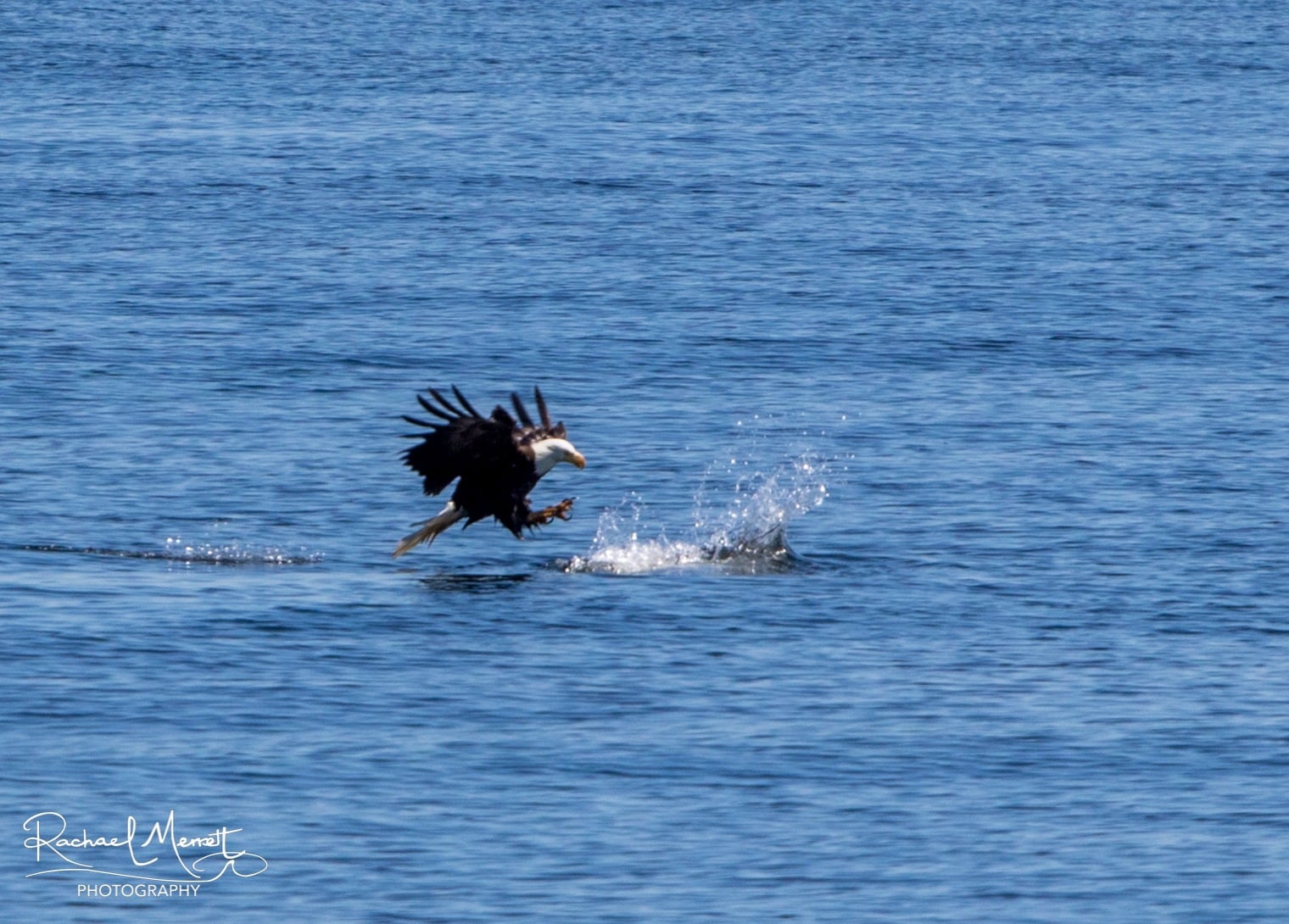Bald Eagles are an icon of the Pacific Northwest. Whether they are soaring high above, perching in a tall tree, or clutching a fish from the ocean, they are always spectacular to see. Bald Eagles are a large raptor species that prey on fish, birds, reptiles, and terrestrial & marine mammals. They also practice kleptoparasitism (stealing food from other species) and scavenge the remains of dead animals.
Giant But Light Weight
- Bald Eagles have a wingspan of 180-230 cm (6- 7.5 feet).
- Their perch height is 75- 100 cm (2.5 – 3.5 feet).
- They have poor senses of taste and smell.
- Bale Eagles have hollow bones that only weigh half as much as their feathers, which tallies just 250- 300 grams (just over 1/2 a pound). Their feathers collectively weigh approximately 585 grams (slightly over 1 pound).
Eye for Detail
- Bald Eagles have highly developed vision with 2 centres of focus called foveae, enabling them to focus both forwards and sideways.
- Humans see in 3 basic colours, Bald Eagles see in a whopping 5 colours. They can also see ultraviolet light, but they do not have good night vision.
Monogamous Lovers
- Bald Eagles mate for life and couples build their love nests high up in tall trees. The size of the nests can become very large as the couple builds up the nest each year.
- If they do not have access to trees, they may build their nest on the face of cliffs or even on the ground.
- Bald Eagles reach maturity at 4- 5 years old.
- They lay 2- 3 eggs each year, with eaglets hatching between mid- April to early May after a 35 day incubation period.
- Both males and females have an average lifespan of 20 years.
Photo Credit: Rachael Merrett- Orca Spirit Marine Naturalist
Bald Eagles are a common sight on many of our whale watching tours. We often see them soaring above the treeline, diving for fish, consuming their prey on the tops of small islands, or even stealing food from other species!
If you love Bald Eagles and other interesting marine wildlife, be sure to join us on an excursion where you can see the wildlife flourish in their natural habitat and capture some amazing photos of your own!









